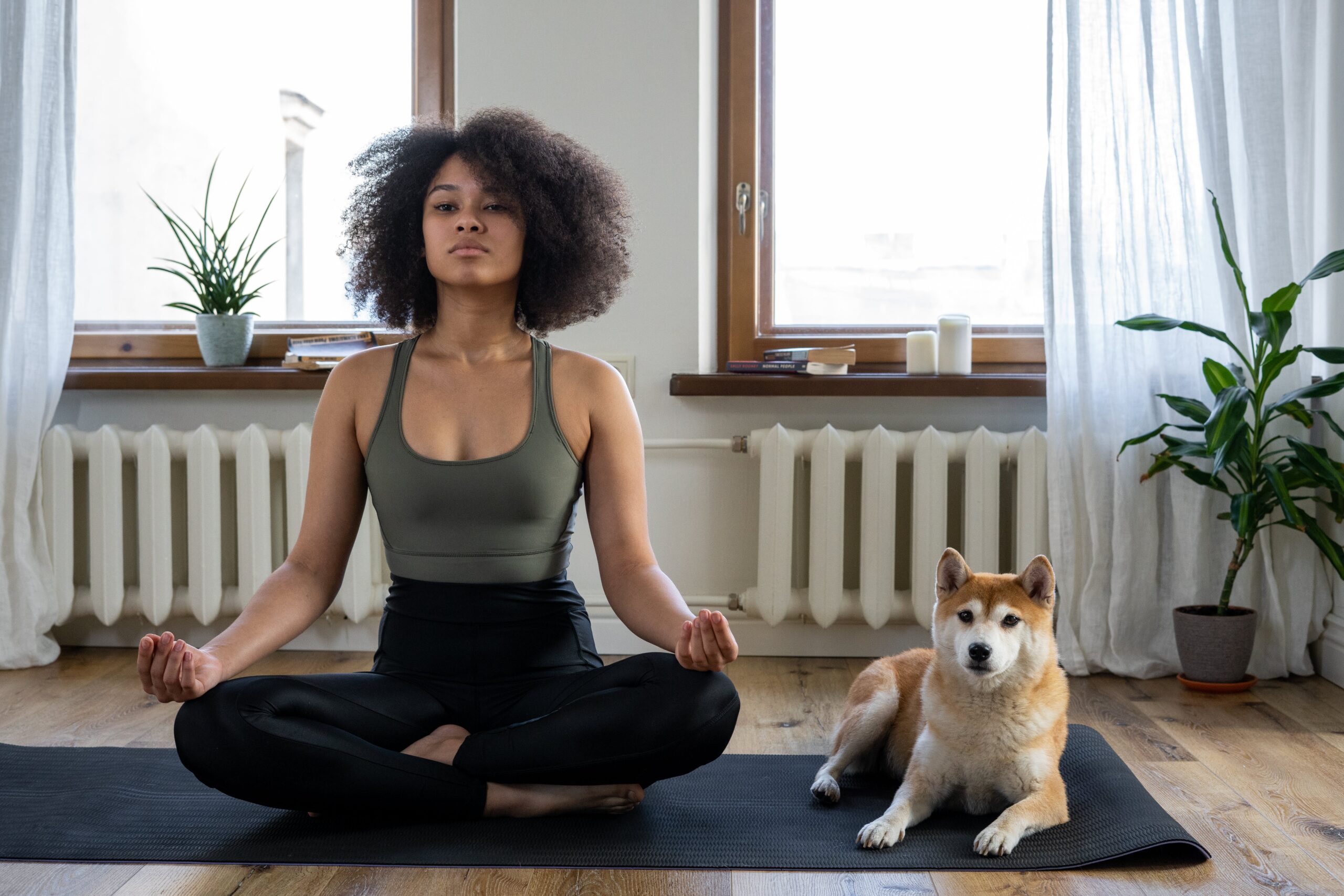Introduction
Self-care is the practice of taking an active role in protecting our well-being, pursuing happiness, and having the ability, tools, and resources to respond to periods of stress so that they don’t result in imbalance and lead to a health crisis. Self-care means asking yourself what you need and following through on the honest answer. Self-care can be as simple as getting to bed earlier on a work night, or as hard as taking a look at some of the habits you’ve created for yourself and their long-term effects.
One of the most effective and popular ways to practice self-care is through mindfulness meditation. Mindfulness meditation is a technique that involves tuning into your experiences to focus on what’s happening in the present moment and observing those feelings and sensations without judgment. Mindfulness meditation can improve both mental and physical health, by reducing stress, anxiety, depression, and pain, and enhancing immune function, mood, and well-being23.
In this blog post, we will explore what mindfulness meditation is, how it works, and how you can practice it for self-care. We will also answer some frequently asked questions and provide some tips and resources to help you get started.
What is Mindfulness Meditation?
Mindfulness meditation is a form of meditation that has two main components: attention and acceptance. The attention component is about directing your awareness to your breath, your thoughts, the physical sensations in your body, and the feelings you are experiencing. The acceptance component is about observing those feelings and sensations without judgment, instead of responding or reacting to them. You aim to note them and let them go.
Mindfulness meditation can be practiced in different ways, such as sitting, walking, lying down, or doing yoga. The most common way is to sit comfortably, close your eyes, and focus on your breathing. You can also use a guided meditation, which is a recorded audio or video that instructs you on how to meditate and what to focus on.
Mindfulness meditation is not a religious practice, although it has roots in Buddhism and other spiritual traditions. It is a secular and scientific method that anyone can learn and benefit from, regardless of their beliefs, background, or culture.
How Does Mindfulness Meditation Work?
Mindfulness meditation works by changing our brain and biology in positive ways, improving our mental and physical health. Here are some of the ways that mindfulness meditation affects us:
- It reduces stress. Mindfulness meditation lowers the levels of cortisol, the stress hormone, and activates the parasympathetic nervous system, which is responsible for relaxation and recovery. It also reduces the activity of the amygdala, the brain region involved in fear and anxiety, and increases the activity of the prefrontal cortex, the brain region involved in planning and decision-making.
- It improves mood. Mindfulness meditation boosts the levels of serotonin, dopamine, and endorphins, the neurotransmitters that regulate happiness, pleasure, and reward. It also enhances the activity of the left anterior cingulate cortex, the brain region associated with positive emotions and empathy.
- It alleviates depression. Mindfulness meditation helps prevent relapse in people who have had previous episodes of major depression, by teaching them how to recognize and disengage from negative thoughts and emotions. It also increases the activity of the hippocampus, the brain region involved in memory and learning, which is often reduced in people with depression.
- It relieves pain. Mindfulness meditation reduces the perception of pain, by altering the way the brain processes pain signals. It also increases the activity of the insula, the brain region involved in interoception, which is the awareness of the internal state of the body.
- It boosts immunity. Mindfulness meditation enhances the function of the immune system, by increasing the production of antibodies and natural killer cells, which fight against infections and cancer. It also reduces inflammation, which is linked to many chronic diseases.
How to Practice Mindfulness Meditation for Self-Care
Practicing mindfulness meditation for self-care is not difficult, but it does require some commitment and consistency. Here are some steps to help you get started:
- Find a time and place that works for you. Ideally, you should practice mindfulness meditation every day, for at least 10 minutes. You can choose any time of the day that suits you, but many people find it helpful to meditate in the morning, to start the day with a clear and calm mind, or in the evening, to unwind and relax before going to bed. You should also find a place that is quiet, comfortable, and free of distractions, such as your bedroom, living room, or garden.
- Set a timer and sit comfortably. You can use your phone, a watch, or an app to set a timer for your meditation session. You can also use a guided meditation, which will tell you when to start and stop. You should sit comfortably, with your back straight, your shoulders relaxed, and your hands resting on your lap or knees. You can sit on a chair, a cushion, or the floor, whatever feels best for you. You can also lie down, if that is more comfortable, but make sure you don’t fall asleep.
- Close your eyes and focus on your breathing. You should close your eyes, or lower your gaze, and bring your attention to your breathing. You don’t need to change your breathing, just observe it as it is. Notice the sensations of the air entering and leaving your nostrils, your chest rising and falling, and your abdomen expanding and contracting. You can also count your breaths, or repeat a word or phrase, such as “in” and “out”, to help you stay focused.
- Observe your thoughts and feelings without judgment. As you meditate, you will notice that your mind will wander to different thoughts and feelings, such as memories, plans, worries, or emotions. This is normal and natural, and you don’t need to fight or suppress them. Instead, you should acknowledge them and let them go, without judging them as good or bad, right or wrong, or attaching to them. You can use labels, such as “thinking”, “feeling”, “hearing”, or “sensing”, to help you identify and detach from your thoughts and feelings. You can also use metaphors, such as imagining your thoughts and feelings as clouds passing in the sky, or leaves floating in a stream, to help you let them go. Whenever you notice that your mind has wandered, gently bring it back to your breathing, and resume your meditation.
- End your meditation with gratitude and kindness. When your timer goes off, or your guided meditation ends, you should slowly open your eyes and take a moment to appreciate your meditation experience. You can express gratitude for the opportunity to practice mindfulness meditation, and for the benefits it brings to your health and well-being. You can also extend kindness and compassion to yourself and others, by wishing yourself and everyone else happiness, peace, and love. You can use phrases, such as “May I be happy”, “May I be healthy”, “may I be safe”, or “May I be free from suffering”, to help you cultivate kindness and compassion.
Frequently Asked Questions
Here are some common questions and answers about mindfulness meditation for self-care:
- Q: How long should I meditate for?
- A: There is no fixed rule on how long you should meditate, but research suggests that the optimal duration is between 10 and 40 minutes per day. You can start with shorter sessions, such as 5 or 10 minutes, and gradually increase the length as you become more comfortable and confident with your practice. You can also split your meditation time into smaller chunks throughout the day, such as 5 minutes in the morning, 10 minutes at lunch, and 15 minutes in the evening, to fit your schedule and preferences.
- Q: How often should I meditate?
- A: The more often you meditate, the more benefits you will experience. Research shows that the effects of mindfulness meditation are cumulative, meaning that they build up over time and last longer with repeated practice. Ideally, you should meditate every day, or at least several times a week, to maintain and enhance your mental and physical health. However, you should also be flexible and realistic, and not force yourself to meditate when you don’t feel like it, or when you have other priorities or obligations. The most important thing is to find a balance that works for you and to enjoy your meditation practice.
- Q: What if I can’t stop thinking or feeling during meditation?
- A: It is normal and natural to have thoughts and feelings during meditation, and you should not try to stop them or feel bad about them. Mindfulness meditation is not about emptying your mind or suppressing your emotions, but about observing them and letting them go, without judgment or attachment. The goal is not to achieve a state of perfect calm or bliss, but to cultivate a state of awareness and acceptance of what is happening in the present moment. Remember that meditation is a skill that takes time and practice to master and that you will get better at it with patience and perseverance.
- Q: What are some of the challenges or difficulties of meditation?
- A: Some of the common challenges or difficulties of meditation are:
- Finding the time and space to meditate. You may have a busy or unpredictable schedule, or live in a noisy or crowded environment, that makes it hard to find the time and space to meditate. To overcome this challenge, you can try to plan and set a regular time and place for your meditation, or find creative ways to meditate in any situation, such as using headphones, apps, or online videos.
- Dealing with distractions or interruptions. You may encounter external or internal distractions or interruptions during your meditation, such as noises, phone calls, emails, or thoughts. To overcome this challenge, you can try to minimize the sources of distraction or interruption, such as turning off your phone, closing your door, or informing your family or friends that you are meditating. You can also learn to accept and ignore the distractions or interruptions, and gently bring your attention back to your meditation, without getting frustrated or annoyed.
- Facing boredom or resistance. You may feel bored or resistant to meditate, especially in the beginning, or when you face difficulties or challenges in your life. To overcome this challenge, you can try to remind yourself of the benefits and reasons for meditating, and how it can help you cope with stress and improve your well-being. You can also try to vary your meditation practice, by using different techniques, durations, or formats, to keep it interesting and enjoyable.
Conclusion
Mindfulness meditation is a powerful and simple way to practice self-care, by taking care of your mental and physical health and enhancing your happiness and well-being. By practicing mindfulness meditation regularly, you can reduce stress, improve mood, alleviate depression, relieve pain, and boost immunity. You can also develop a more positive and compassionate relationship with yourself and others, and live more fully and authentically in the present moment.
To practice mindfulness meditation for self-care, you only need a few minutes a day, a comfortable place, and a willingness to observe and accept your experiences without judgment. You can also use guided meditations, apps, or online resources to help you get started and stay motivated. The most important thing is to find a way that works for you and to enjoy the process and the results.
We hope this blog post has inspired you to try mindfulness meditation for self-care and to discover the benefits it can bring to your life. If you have any questions, comments, or feedback, please feel free to share them with us. We would love to hear from you. Thank you for reading, and happy meditating!

 By
Venita Adams
By
Venita Adams





